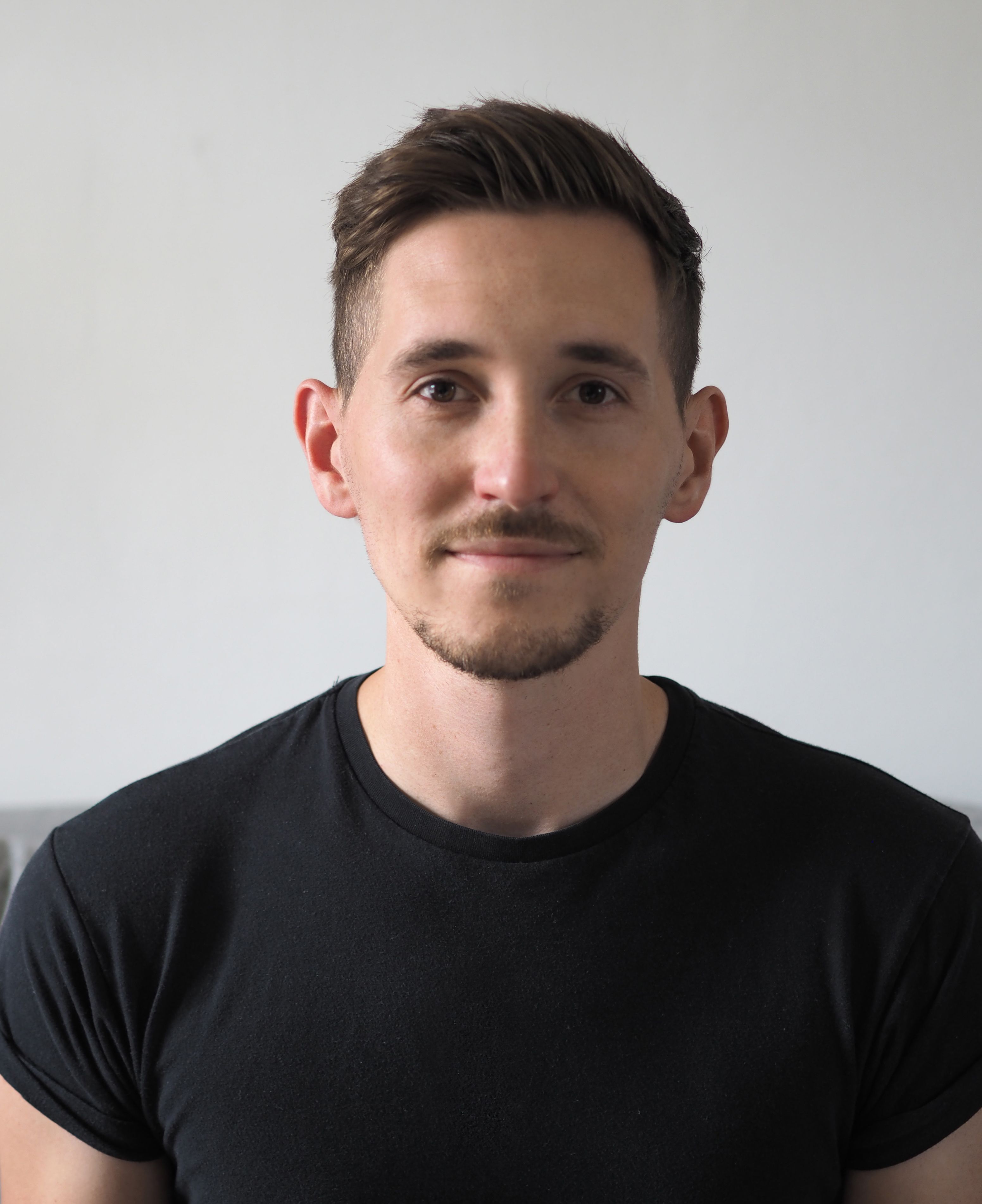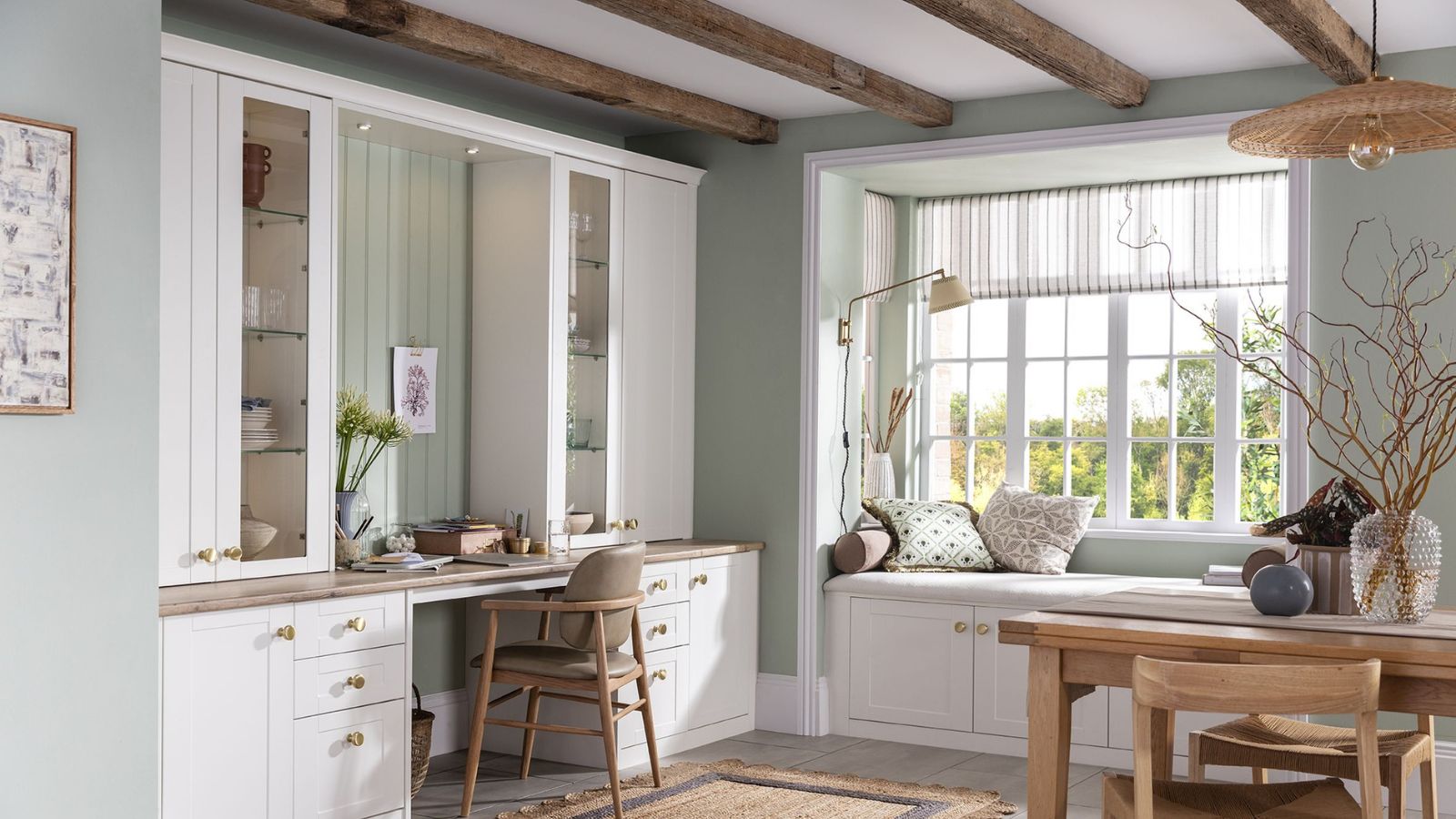Sustainable kitchens: 18 ideas for an eco-friendly design
Want to create a sustainable kitchen with impeccable eco-credentials? Follow these ideas to create the perfect recipe for sustainability
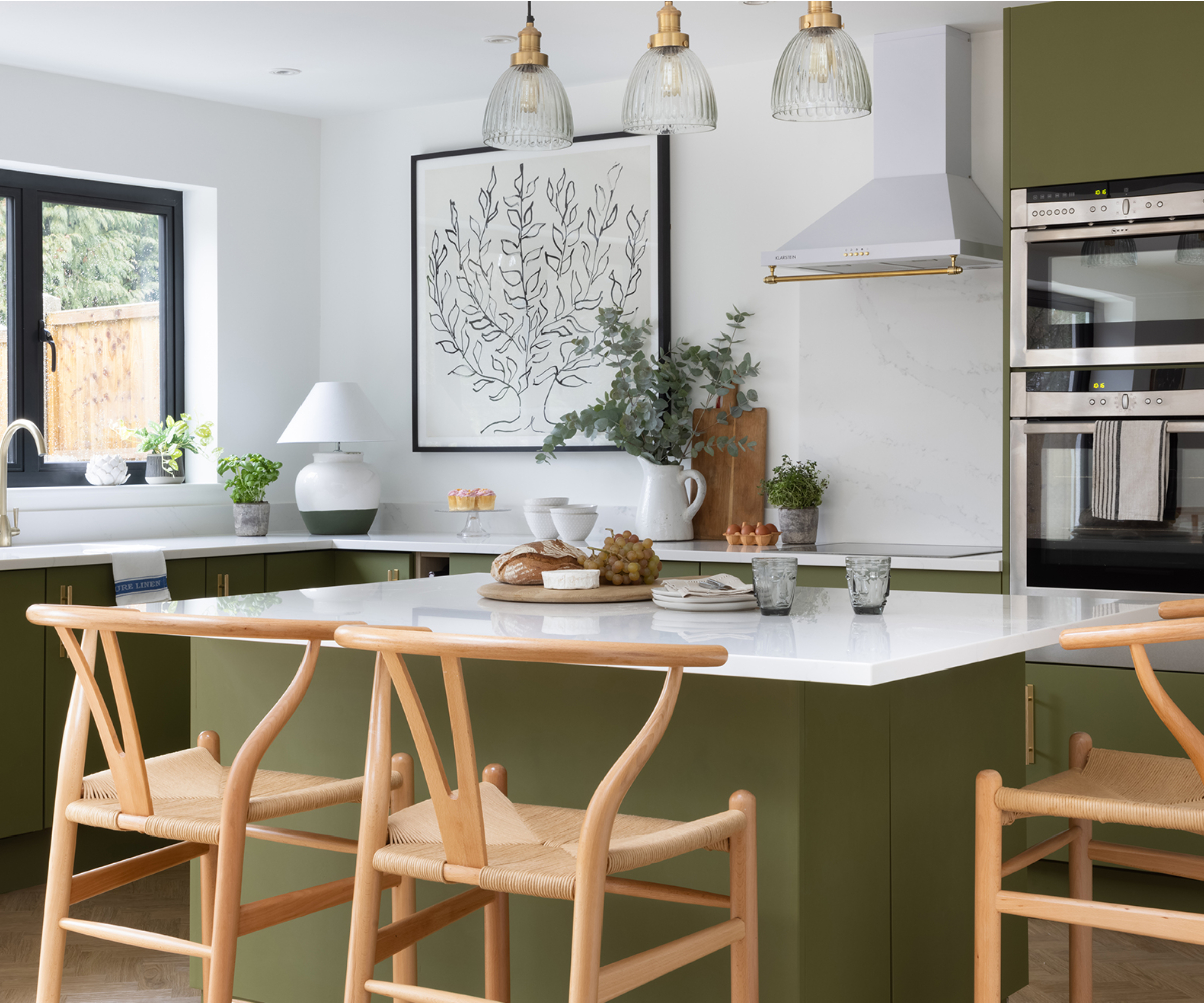
From choosing sustainable timber for your cabinets through to considering tiles and flooring made from recycled materials, there are plenty of changes you can make when it comes to creating an eco-friendly kitchen design.
The good news is, even if you're renovating your current culinary spot, there are still plenty of tricks for boosting your eco-credentials. We've cooked up 18 ideas to help you create a sustainable kitchen.
1. Choose a kitchen using sustainable timber
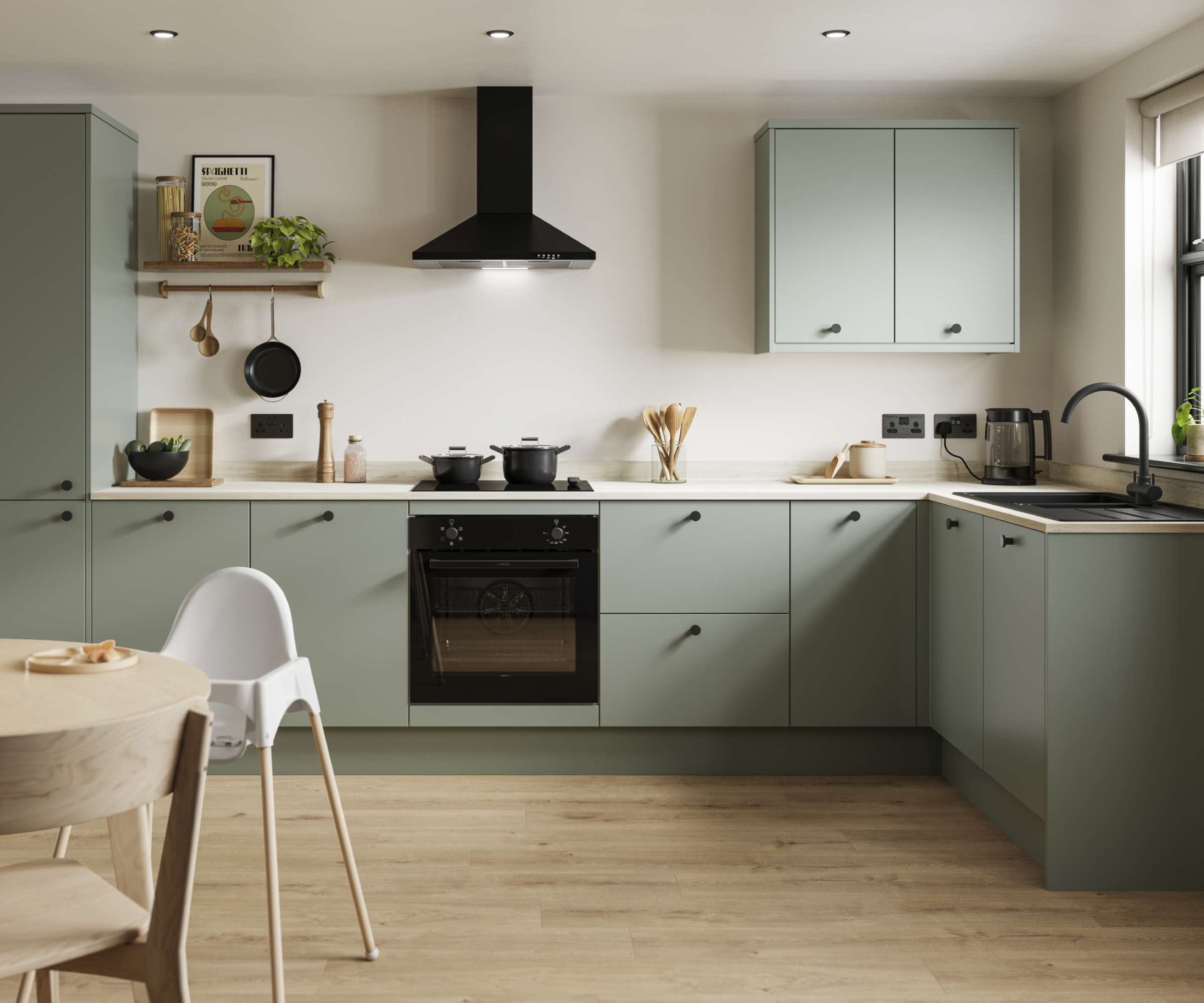
FSC-certification is an important mark to look out for when buying a timber kitchen or wood flooring. Awarded by the Forest Stewardship Council, this accreditation means that the timber used has been sourced from sustainably and responsibly managed forests that also provide environmental, social and economic benefits for local people.
2. Opt for a quality kitchen that will last longer
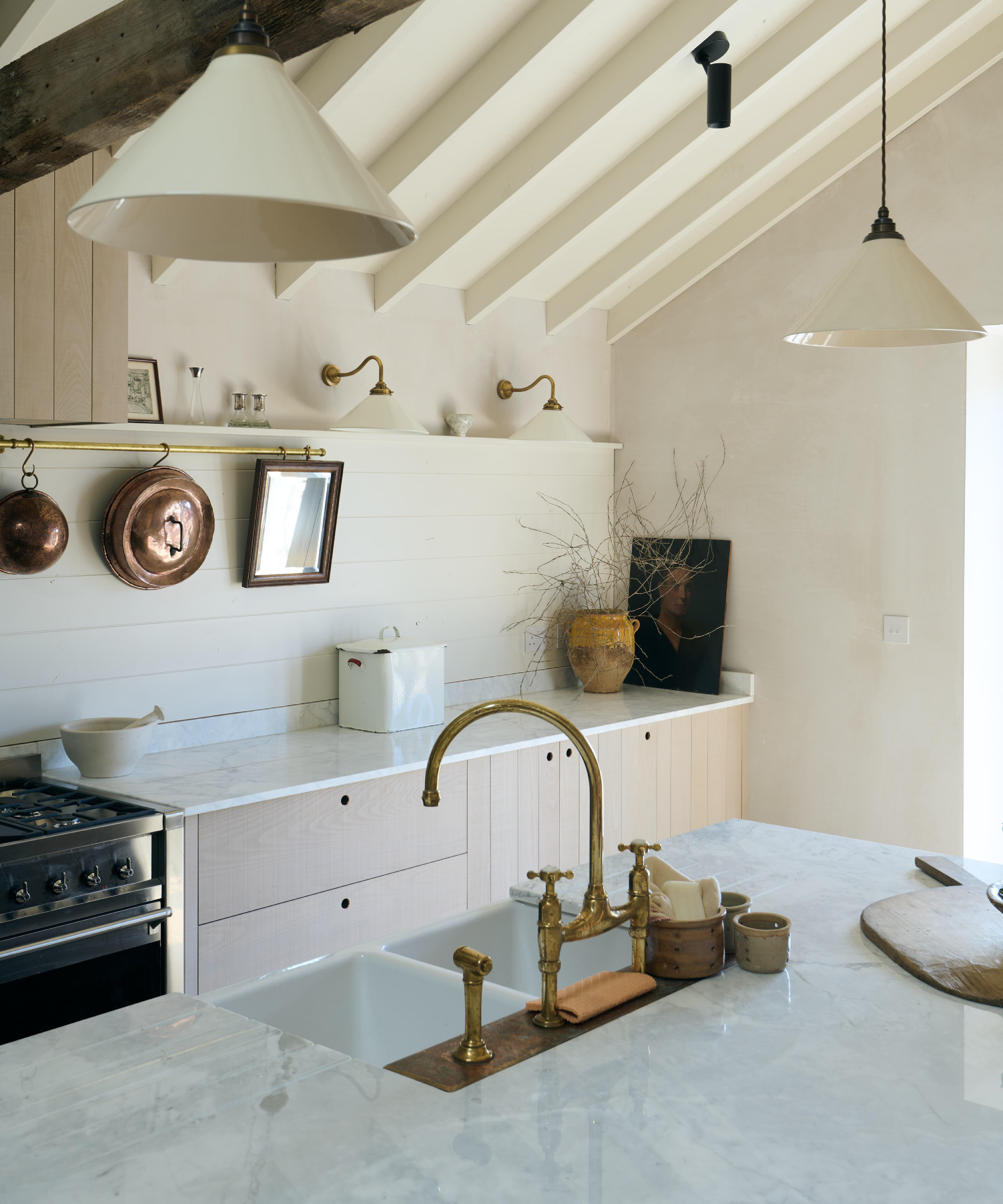
A low quality, cheap kitchen will always prove a false economy, both in terms of your finances and the environment.
"When purchasing anything, it is always important to buy locally made and British products if you can," says Helen Parker, creative director of deVOL Kitchens.
"It is also good practice to purchase things of a high quality, things that will last and not need replacing. While the initial outlay can sometimes be more costly it is worth considering that once bought it will serve you well for many years if not a lifetime."
"It's not always about buying recycled items or sustainable items," says Helen. "It is always buying less, needing less, replacing less, and demanding quality."
Bring your dream home to life with expert advice, how to guides and design inspiration. Sign up for our newsletter and get two free tickets to a Homebuilding & Renovating Show near you.
A good quality timber kitchen can also easily be reinvigorated with plenty of painted kitchen cupboard ideas to inspire you. Choosing a timeless style such as a Shaker kitchen will ensure your space can always be in tune with the latest trends.
3. How sustainable is a budget kitchen?
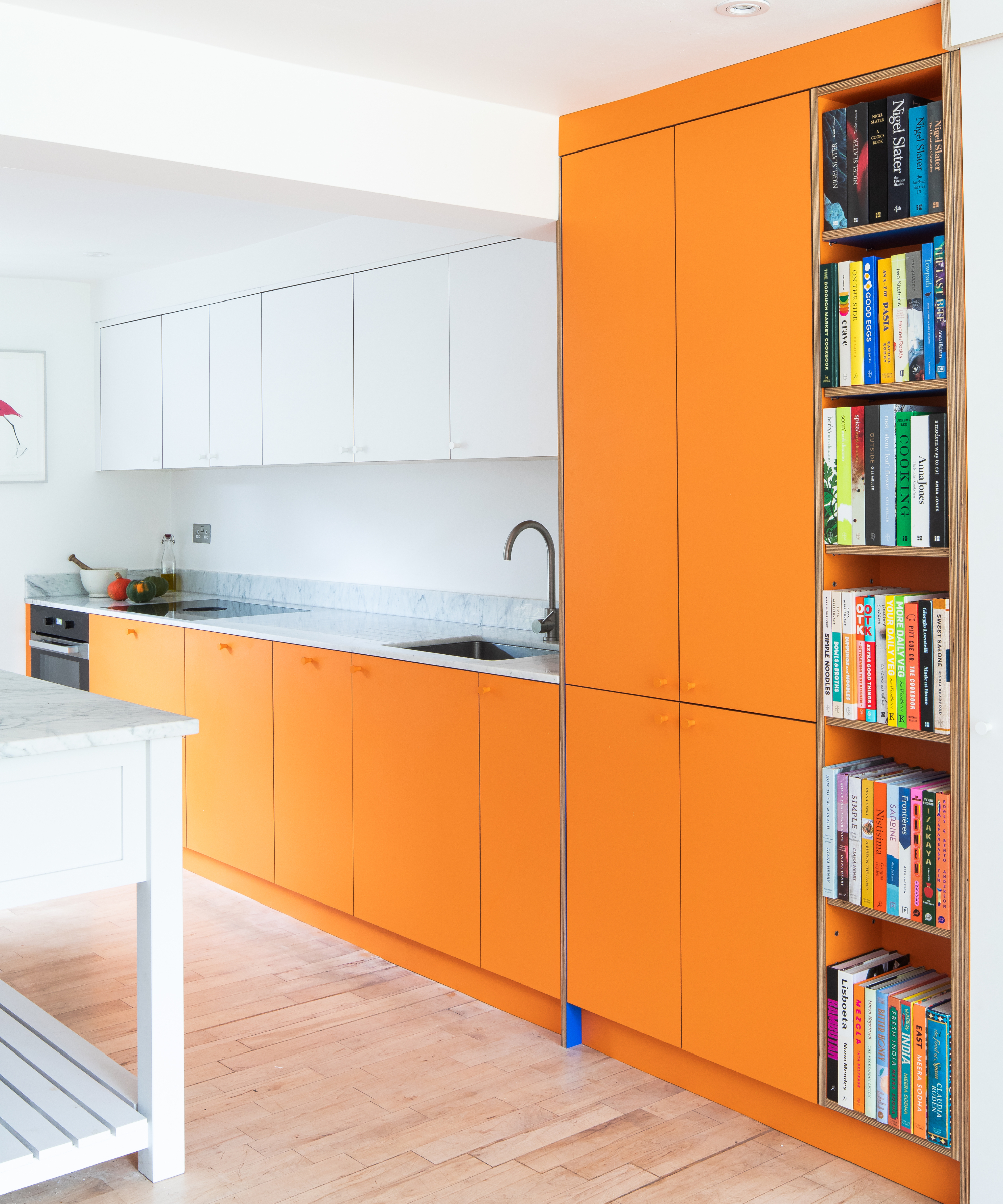
Solid timber kitchens, while eco-friendly if sustainably sourced, are largely the more expensive options available on the market. If you're researching how much does a new kitchen cost, you may be wondering if you can source a sustainable kitchen on a budget?
It is possible for kitchen units made from Melamine faced chipboard (MFC) and MDF, both widely used in cheaper kitchens, to have eco-friendly qualities if they're made from recycled materials.
Birch-ply is also another more budget-friendly alternative to solid timber. This is often FSC-certified by the manufacturer and offers a more durable quality to ensure your kitchen lasts longer.
4. Use reclaimed and salvaged materials
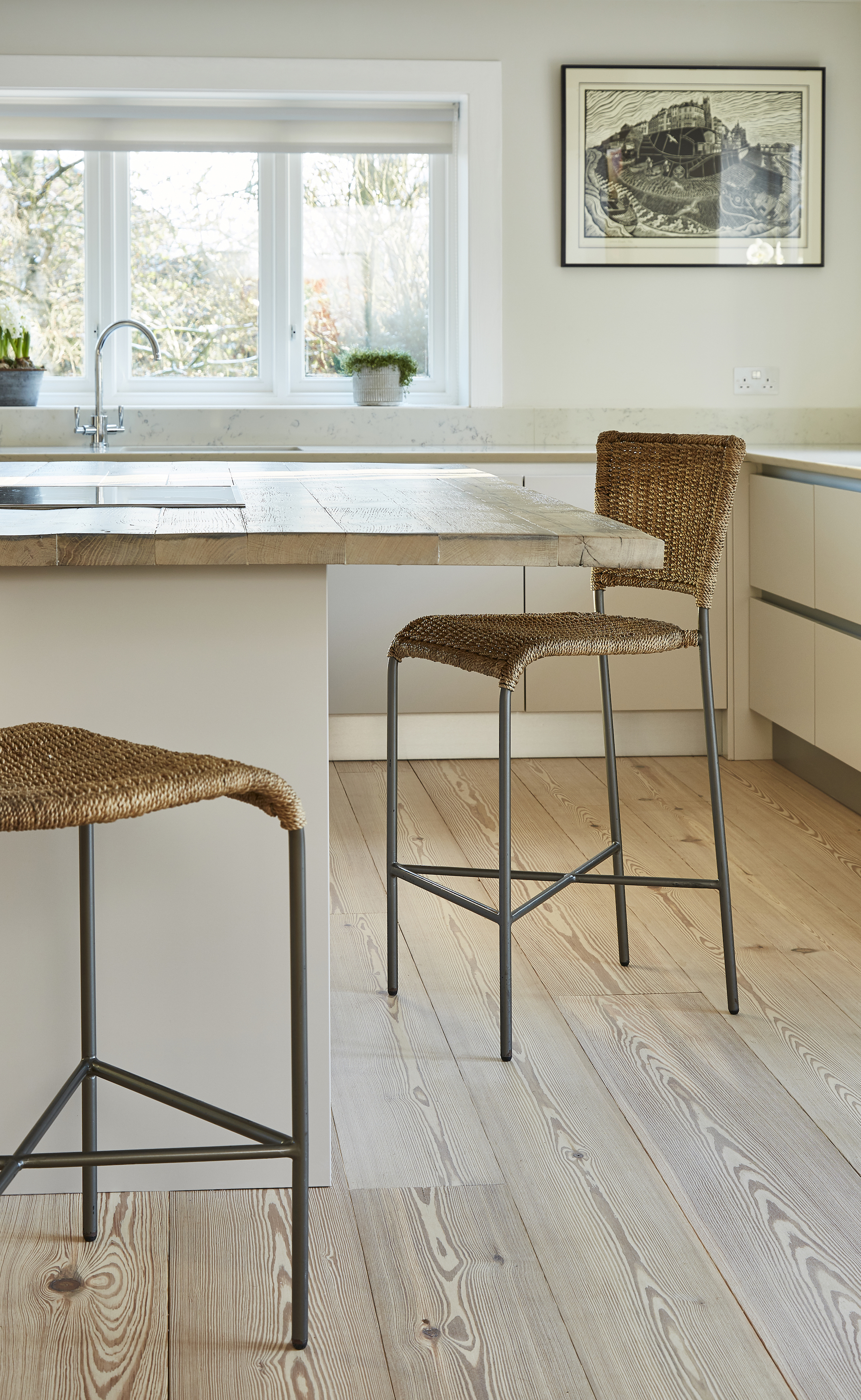
Salvaging materials isn't just a case of diving into skips in hopes of finding a discarded gem. While salvage yards are found widely and can offer up brilliant discoveries, some retailers also offer salvaged materials for those who prefer a more standardised sourcing experience. Bert & May, for example, offer salvaged tiles; while Lubelska supplies reclaimed brick tiles from Balkan countries.
The benefits are not only an attractive, characterful look, but also the knowledge that no extra resources or energy were used in creating your salvaged materials.
Look out for sellers who are signed up to the Salvo code, as this promotes responsible sourcing of reclaimed materials.
5. Re-use the kitchen that you already have

A great way to reduce the amount of waste created in a kitchen refit is to utilise as much as you can of your existing kitchen.
If you're existing kitchen carcasses are of good quality, replacement doors can be bought or made, while if you're just after a change of scenery, a fresh lick of paint is sure to bring a new dimension to your kitchen cabinetry.
6. Buy a used kitchen (and sell yours too)
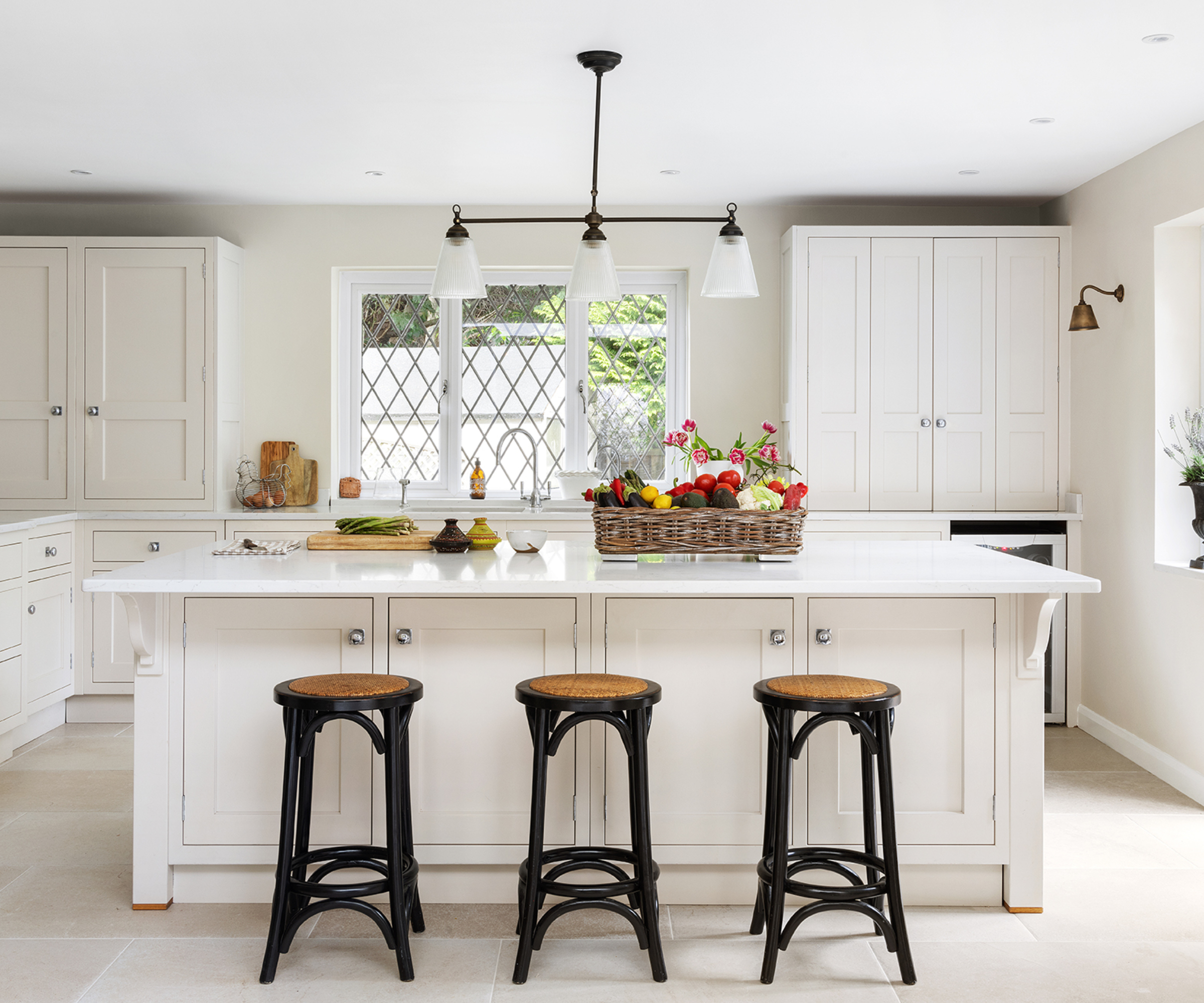
Buying a second hand kitchen or recycling your current one is a great, eco-friendly way of getting quality design without the use of new resources. Not only does this help preserve existing supplies of timber and reduce your kitchen's overall carbon footprint, it helps avoid any element of a replaced kitchen ending up in landfill.
When you buy a used or ex-display kitchen from a specialist retailers such as Rehome or the Used Kitchen Company, you'll be given all the help you need to repurpose it for your own home. Those that are sold are likely to be in good condition, and discounts can start from as much as 50% off the original retail.
"Research shows that 1 in 4 kitchens are replaced within 4 years of use, giving an excellent opportunity for a purchaser to pay only a fraction of the price when new," says Helen Lord, founder of Rehome.
"Buying pre-owned kitchens opens up a world of opportunity for buyers and also considerably lowers the environmental footprint. Our own study created by the Liverpool University Eco Carbon Innovatory showed that the average pre-loved sale saves around 5,000kgs of carbon and 1.9 trees."
7. Look for kitchen worktops with less chemicals
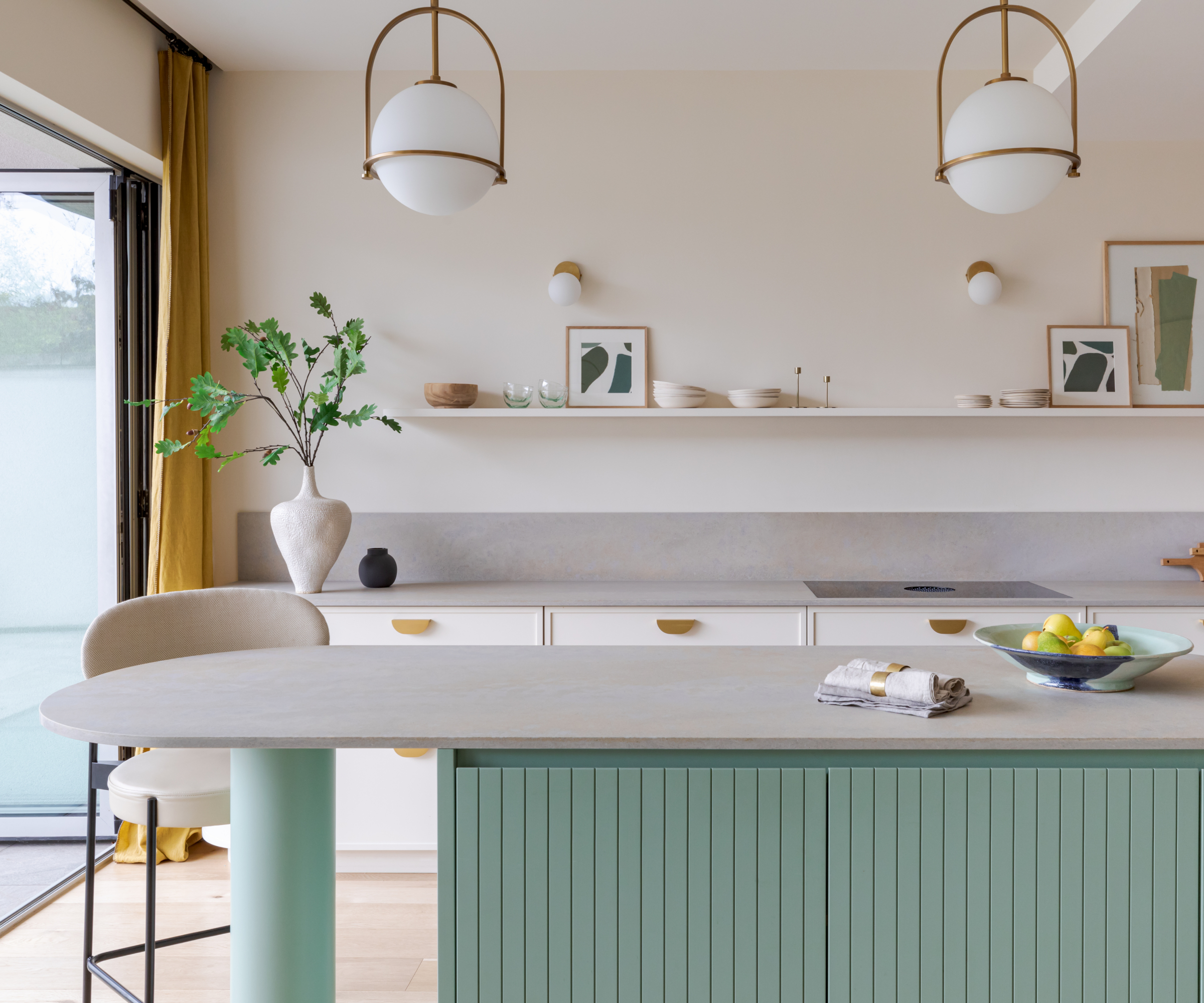
Kitchen worktops are one area where you may be able to find stylish designs that contain recycled materials.
Recycled glass is a popular option, while the likes of Caesarstone have announced the addition of a third-party verified Declare label to the majority of its interior products. The label details the materials used within Caesarstone surfaces and dissipates uncertainty regarding the presence of any unwanted chemicals, while third-party verification ensures information integrity and provides added peace of mind for customers.
Eco concrete worksurfaces can also be created using recycled material to reduce the environmental impact of the concrete's manufacturing.
8. Sustainable kitchen flooring

As well as sustainably sourced timber flooring, you can look to more unusual materials in order to ensure your floor is eco-friendly. Bamboo and cork flooring are both renewable resources, which are growing in popularity and in the range of styles available.
Historically, the production process of flooring has often necessitated the use of chemicals that can severely impact both indoor air quality and the environment. Changing this has been the driving force behind the launch of Modular One floorig from Parador which is PVC free - the single most environmentally damaging of all plastics and plasticisers.
9. Use raw and recyclable materials
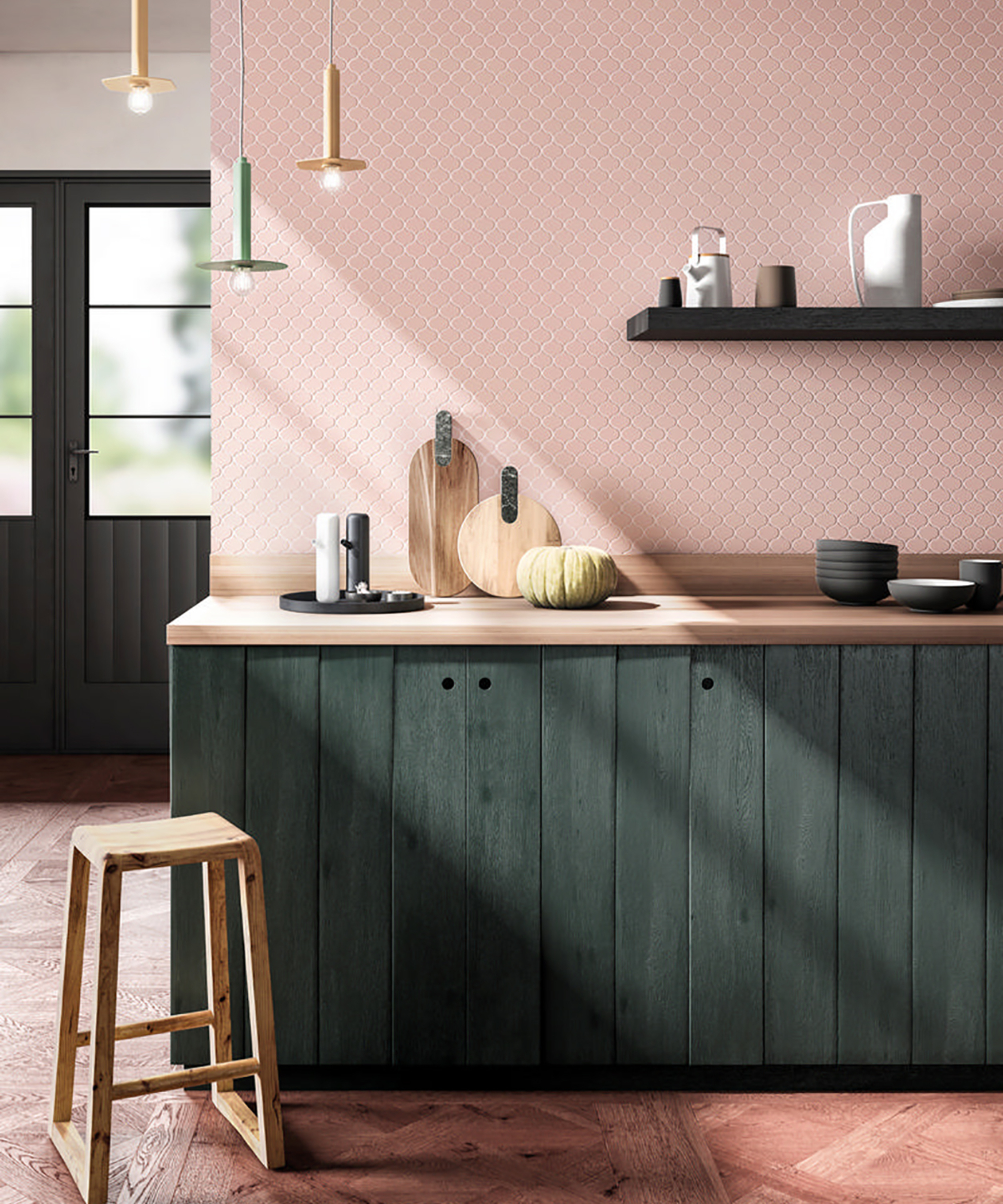
The decision to use recycled materials in the fabric of your kitchen, such as these Pandora mosaic tiles made from recycled glass keeps sustainability at the core of your kitchen design.
No matter the quality, every kitchen also has a shelf life. Once yours reaches the end of its lifespan, the decision to use raw and recyclable materials such as wood and metal means that your kitchen can be easily recycled when it cannot be directly re-used again.
10. Source a sustainable kitchen locally
Your kitchen's carbon footprint is another key area to consider when choosing a manufacturer. A kitchen that is produced locally in the UK is ideal, as it won't have to clock up many miles travelling from the workshop to your home.
However, choosing a company that's also mindful of the journey of the materials it sources is also important. Locally sourced, sustainable materials are always the preferred option, but those who do require to source materials from far away can sign up to eco initiatives such as Green Freight Europe to ensure they are minimising the impact on the environment.
11. Switch to energy efficient appliances
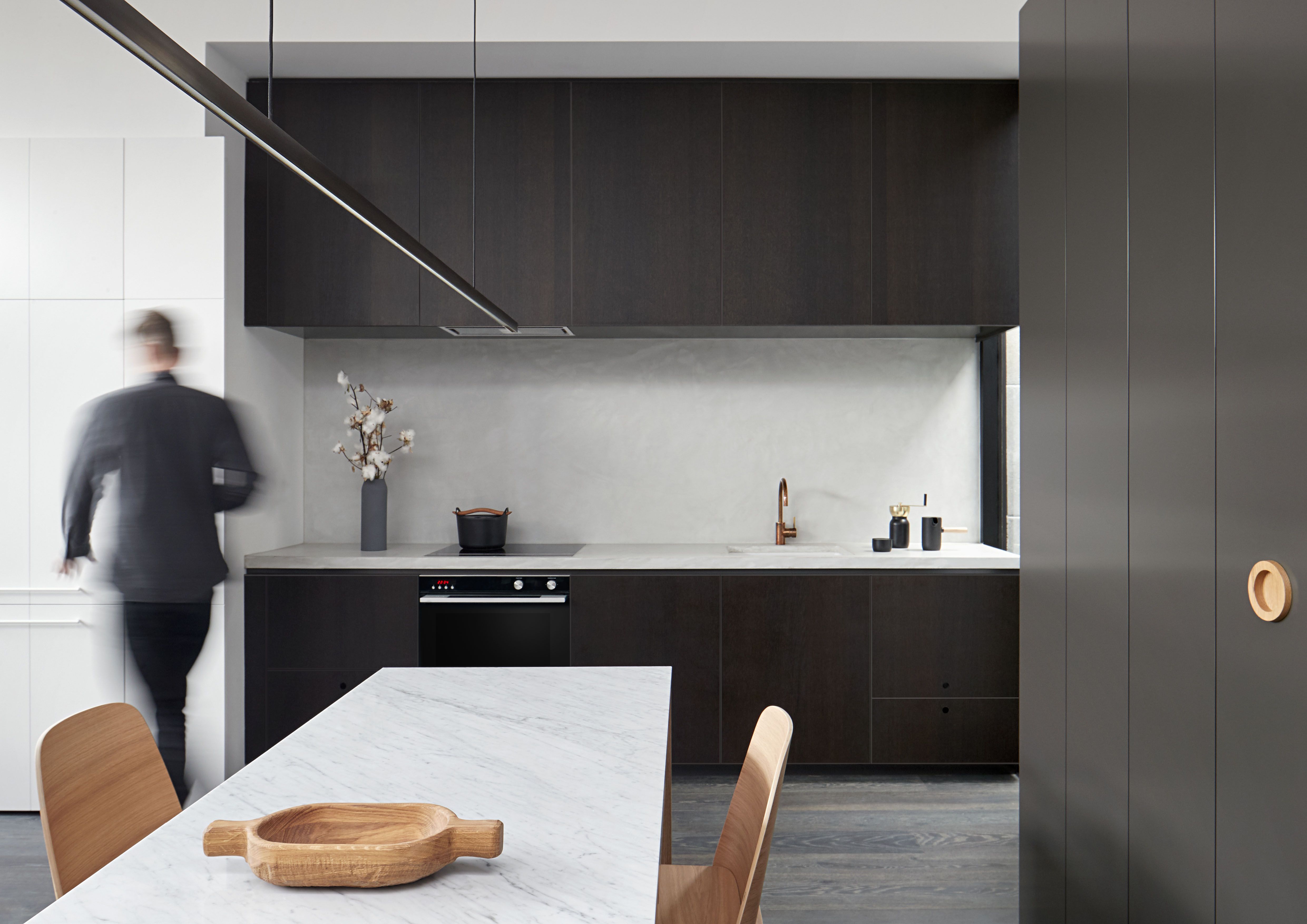
Your choice of smart appliances not only makes your kitchen easier to use, but also improves its energy efficiency.
If you’re looking to reduce your energy usage then swap your gas hob for an induction one. With an induction hob, no heat is wasted during cooking as only the cookware is heated, not the hob surface. This generally means that induction hobs use less energy than electric and gas hobs.
Fridges and freezers that optimise storage temperatures not only make the best use of energy for your home, but also prevent food waste.
Every appliance will have an energy ratings for appliances label designed to help you work out its energy demands and the cost to run it.
12. Opt for a hot tap over a kettle
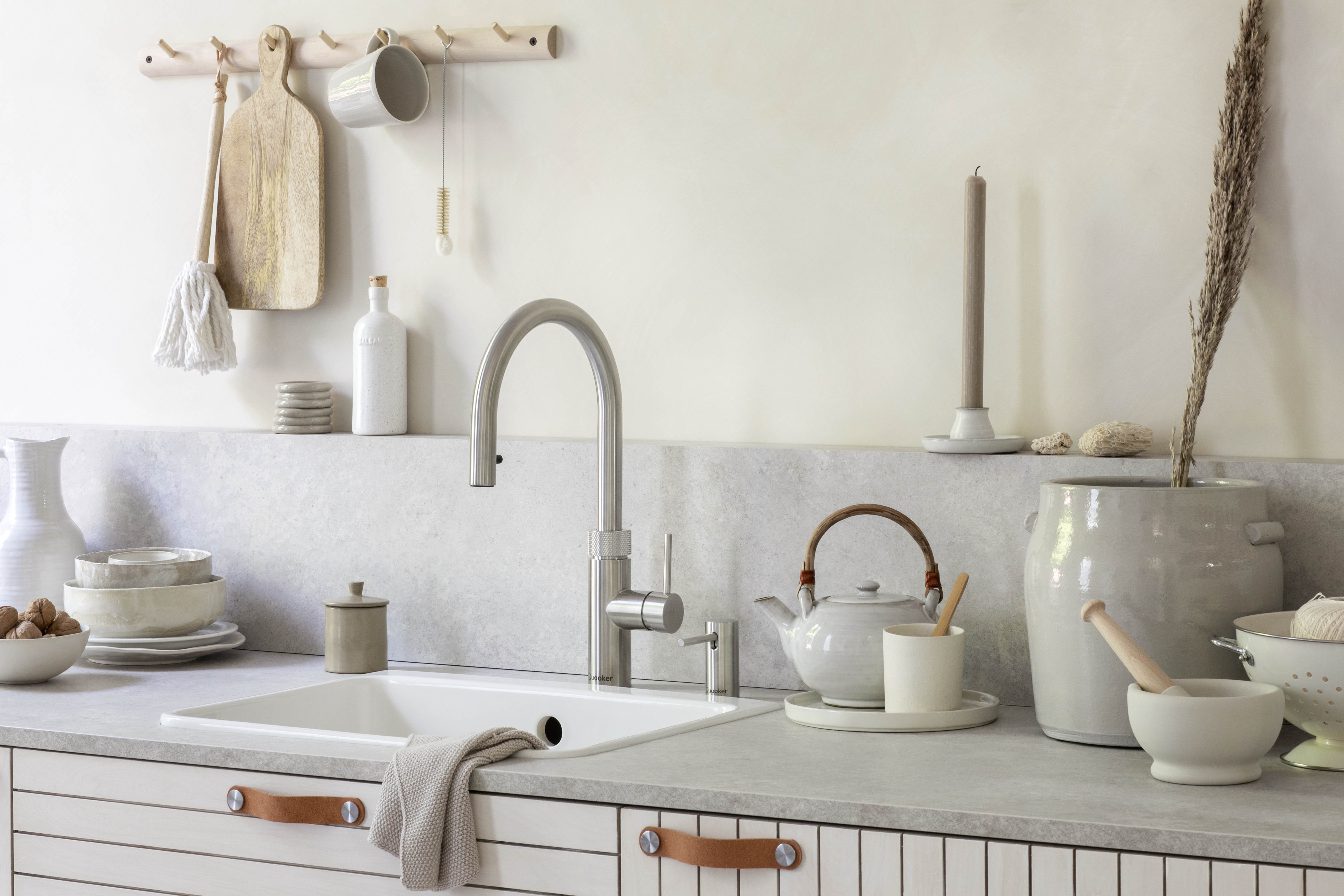
According to the latest research from the Energy Saving Trust, we could each be saving around £36 a year if we didn't overfill our kettles and added a tap aerator.
Alternatively, fit a boiling water tap as this allows you to dispense the exact amount that you need, leading to a more energy efficient use of hot water.
13. Save water with sustainable kitchen tech
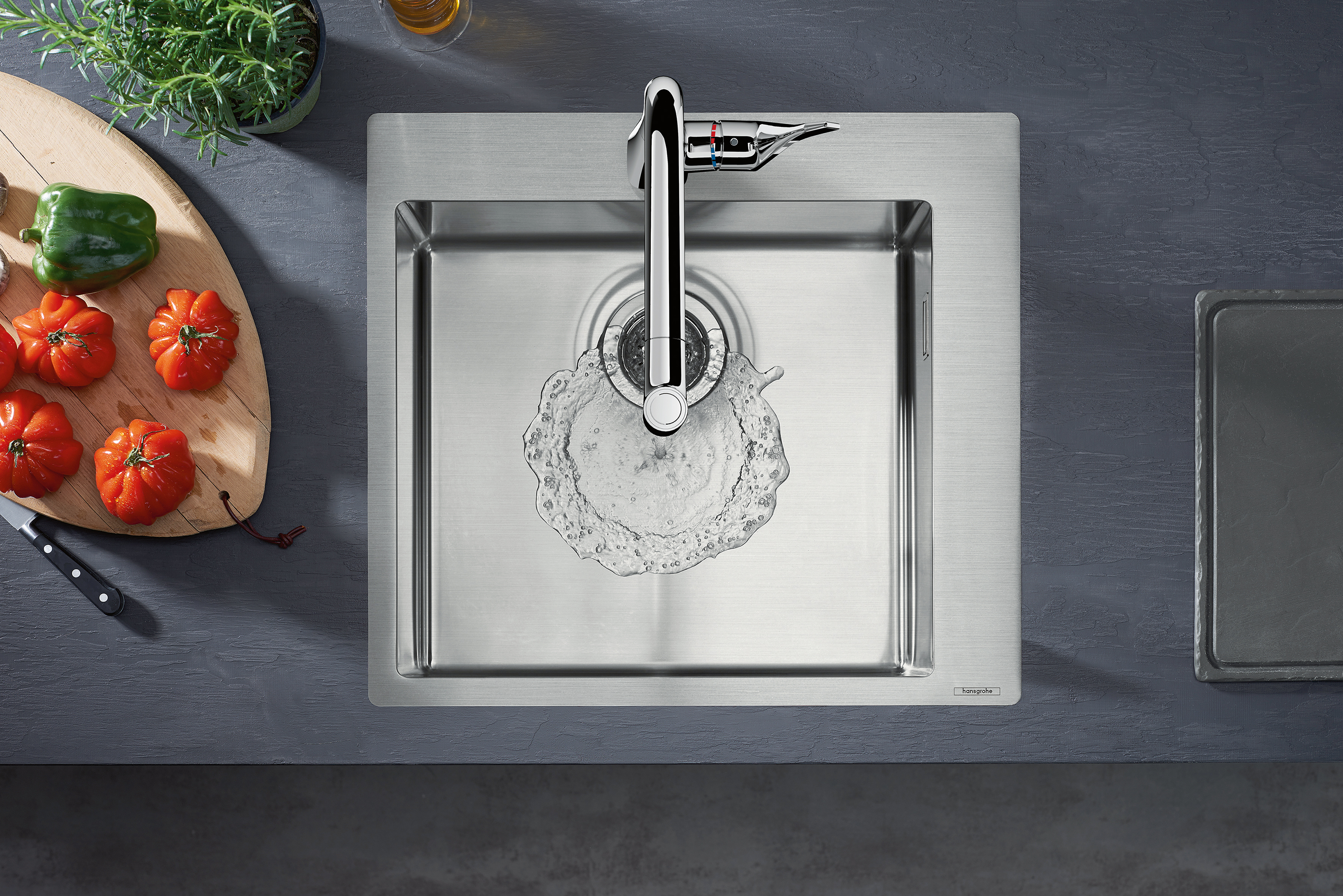
You should also be thinking about conserving water in your kitchen. Taps and appliances (including dishwashers and washing machines) which work with a low water flow and minimise water consumption should be a priority.
The likes of Fisher & Paykel's Dish Drawer offers a more economic way to do small loads in the dishwasher too, as a half load cycle in a standard dishwasher can use similar levels of water and energy as a full cycle.
14. Sustainable paint for your kitchen
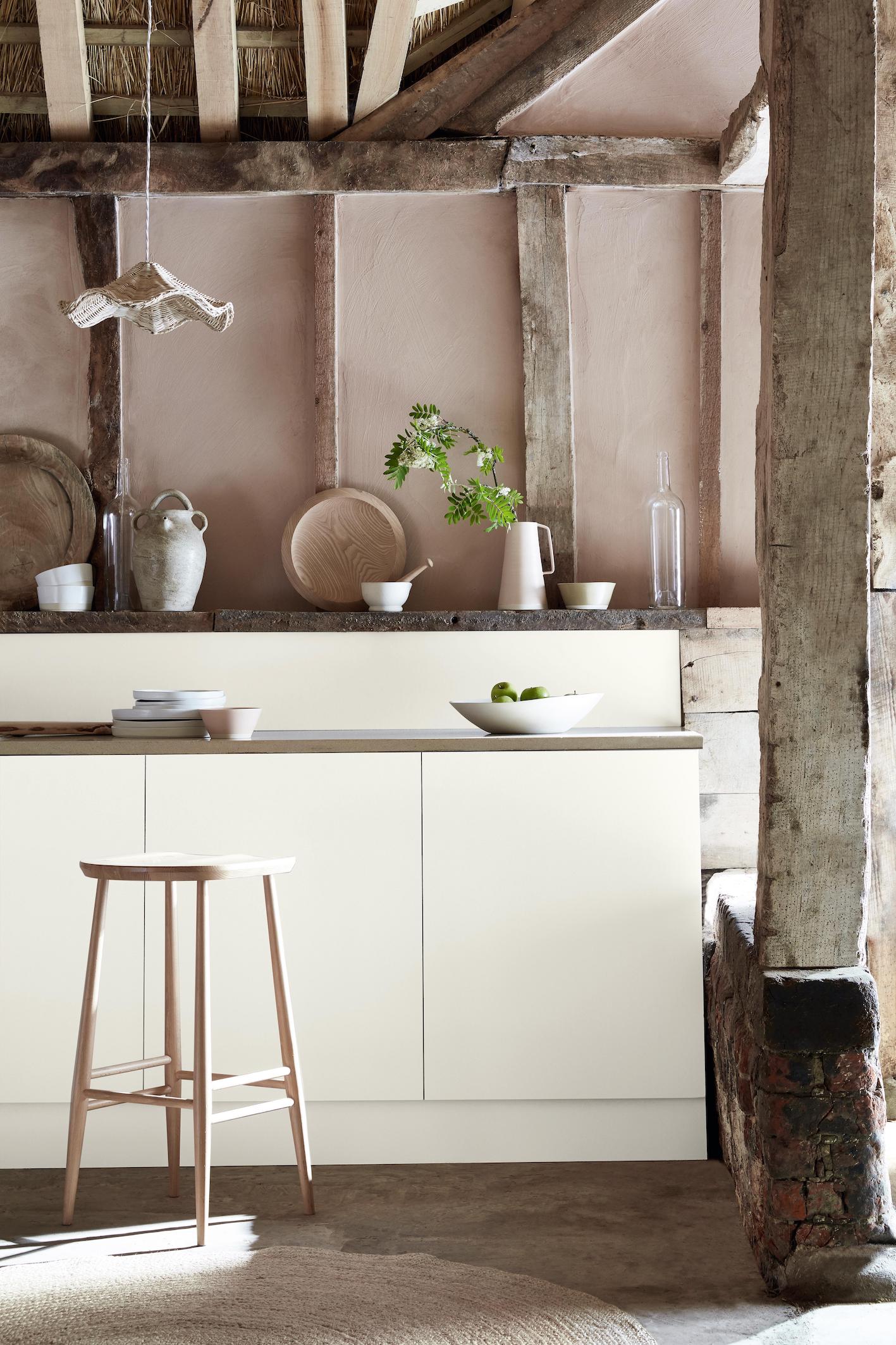
Using eco paints in your kitchen is not only good for the environment, it's good for your home's health.
Paints can be a source of Volatile Organic Compounds (VOCs), which are both damaging to the environment and to your health when inhaled. Water-based paints contain far fewer VOCs than oil-based paints, and are always preferable. Many paint manufacturers produce tough water-based paints for wood that can be used for kitchen cabinetry reducing the reliance on oil-based varieties for a durable finish.
True eco paints also have no or minimal plastic content, are produced in an eco-friendly manner and use recyclable packaging.
Brands such as Little Greene have also recognised that waste is an issue when it comes to paint. Their Re:mix range is a collection of left-over, unwanted paints, reformulated into a matt finish paint suitable for interior walls and ceilings. It's claimed the upcycling of these waste paints prevents up to 60,000 litres of high-quality mineral and organic raw materials from going to waste each year.
15. Choose resin over concrete flooring
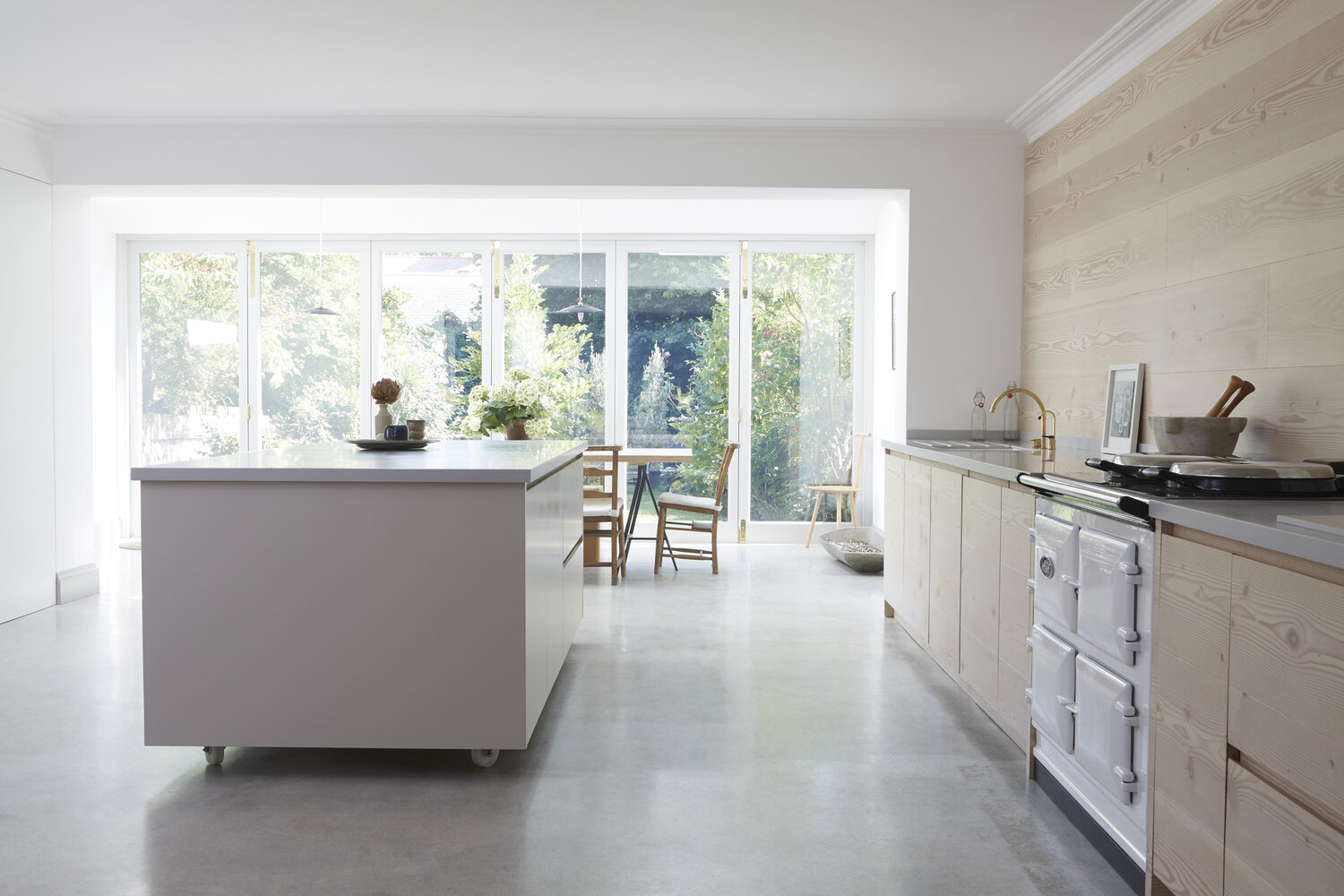
Polished concrete floors are in high demand in modern, open-plan kitchens, however, concrete is a material with questionable eco-credentials, using large quantities of energy in the production process.
You can recreate the look with poured resin, which today has some impressive sustainable qualities, though may cost slightly more than concrete.
16. Build a kitchen extension with fabric first principles
When extending your home to create more space for your kitchen, look to work with an architect or build team that follows a fabric first approach to building.
This prioritises creating an airtight structure and maximising solar gain to reduce the reliance on your home's heating system.
A fabric first approach should be followed first, before looking at renewable heating systems for your home.
17. Choose a company that prioritises sustainability
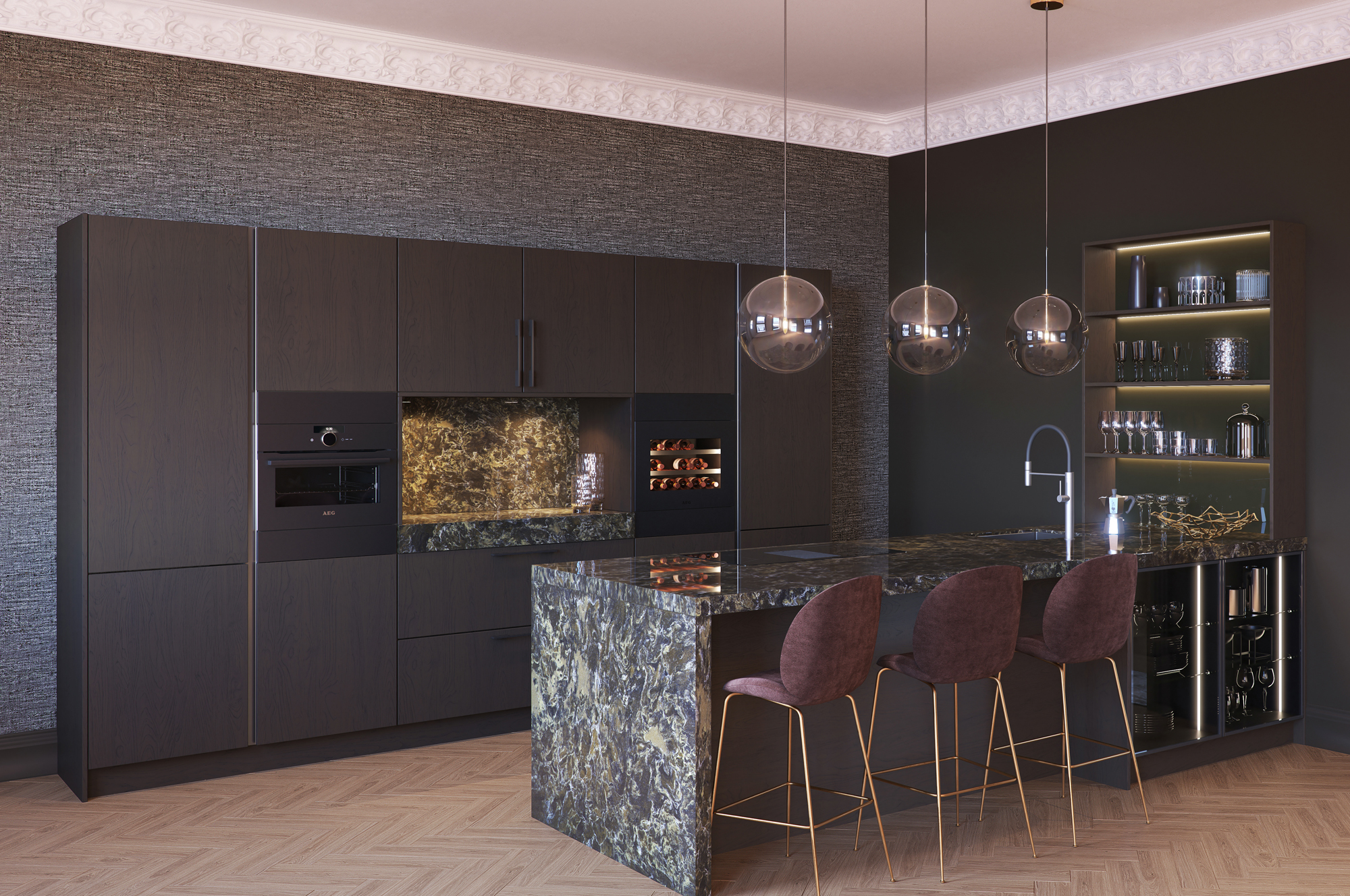
If sustainability is important to you, before you settle on a kitchen company, try searching for their name plus 'sustainability' in a search engine.
For those companies that go the extra mile to make sure their business is sustainable, they'll be sure to shout from the rooftops exactly what measures they take to reduce their environmental impact.
Qualities such as carbon neutral production, renewable energy systems, recyclable packaging and investment in reforestation programmes are just a few ways that kitchen companies may push their green credentials to the next level.
18. Use long-lasting LED lighting
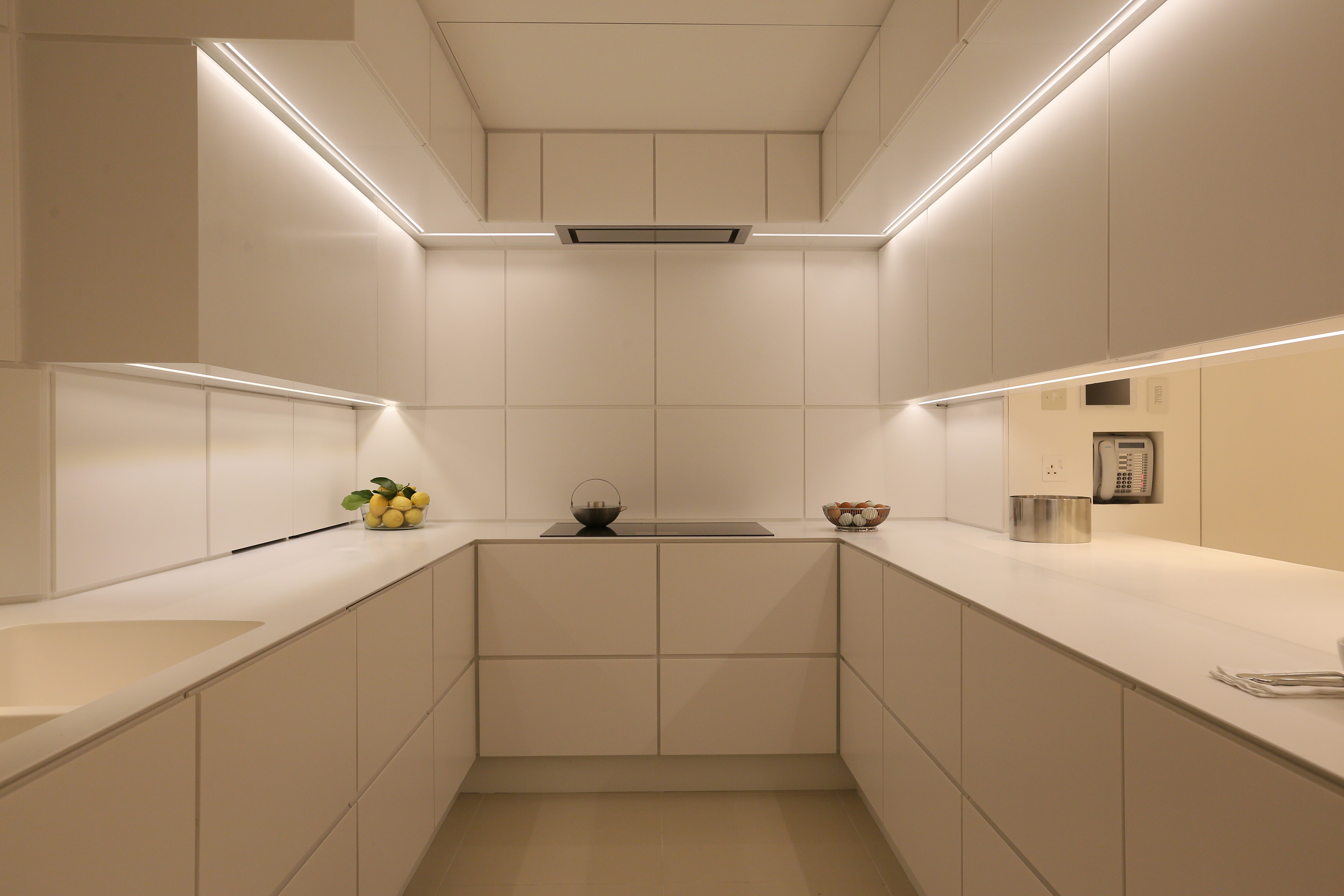
Did you know that LED lighting is 75-80% more efficient than standard incandescent bulbs? LED lights also last 25 times longer, ensuring less waste, so opting for LED lighting wherever possible is the eco-friendly option for your kitchen.
If your kitchen is the heart of your home, investing in both the quality and the eco-credentials is key. If you're looking for more kitchen inspiration, head to our kitchen ideas article to find over 30 clever concepts.
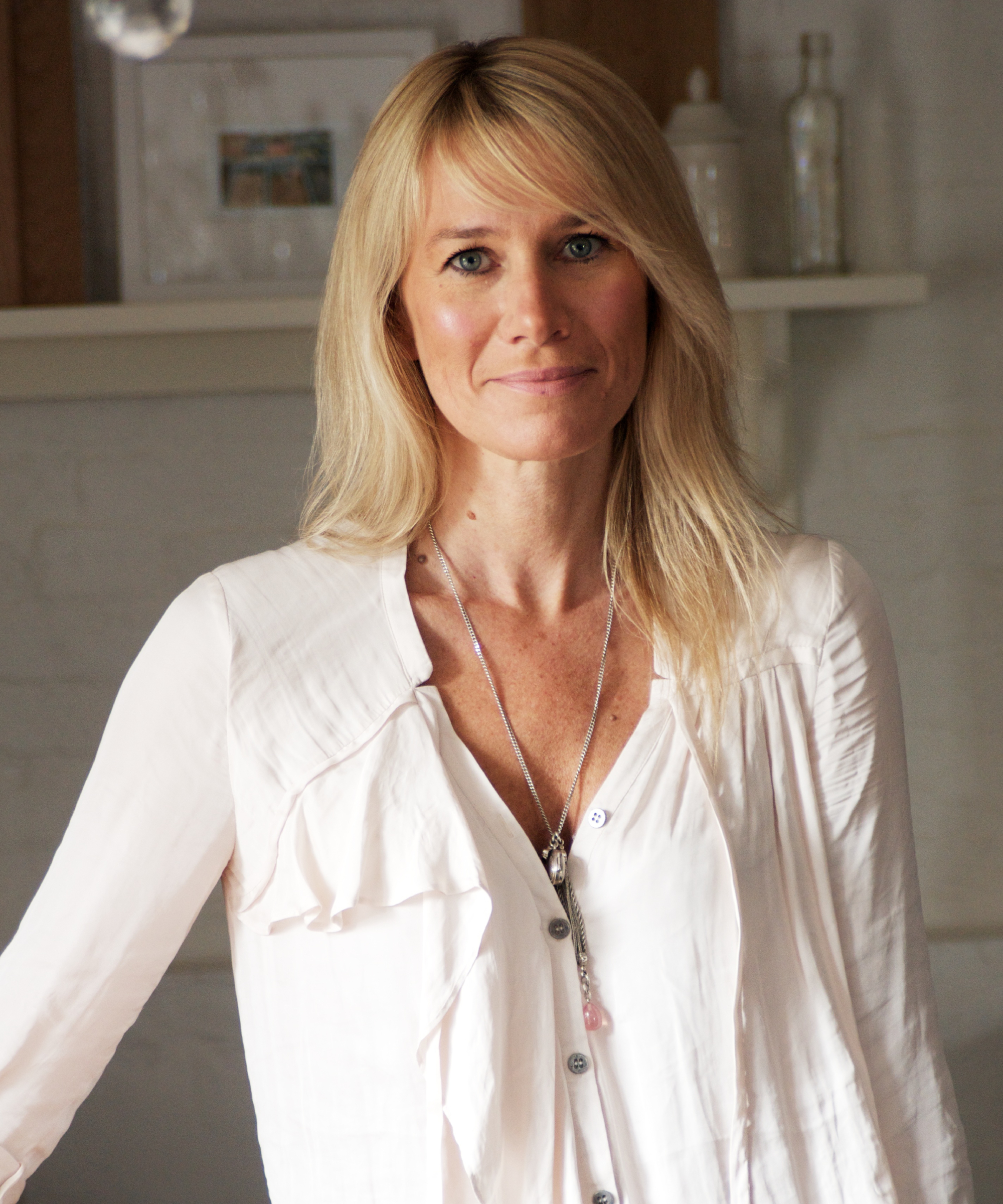
Helen Parker is deVOL's Creative Director. Joining in 2004 as a kitchen designer, by 2011 she had become responsible for deVOL's style, creating one-of-a-kind showrooms, sourcing antiques and gifts and designing new pieces of furniture and accessories. Over the years, she has developed deVOL's look and voice. Recently, Helen has been busy helping to produce and starring in deVOL's Emmy nominated TV series. Helen's passion and desire to create a special look for deVOL has proved to be the making of this company.
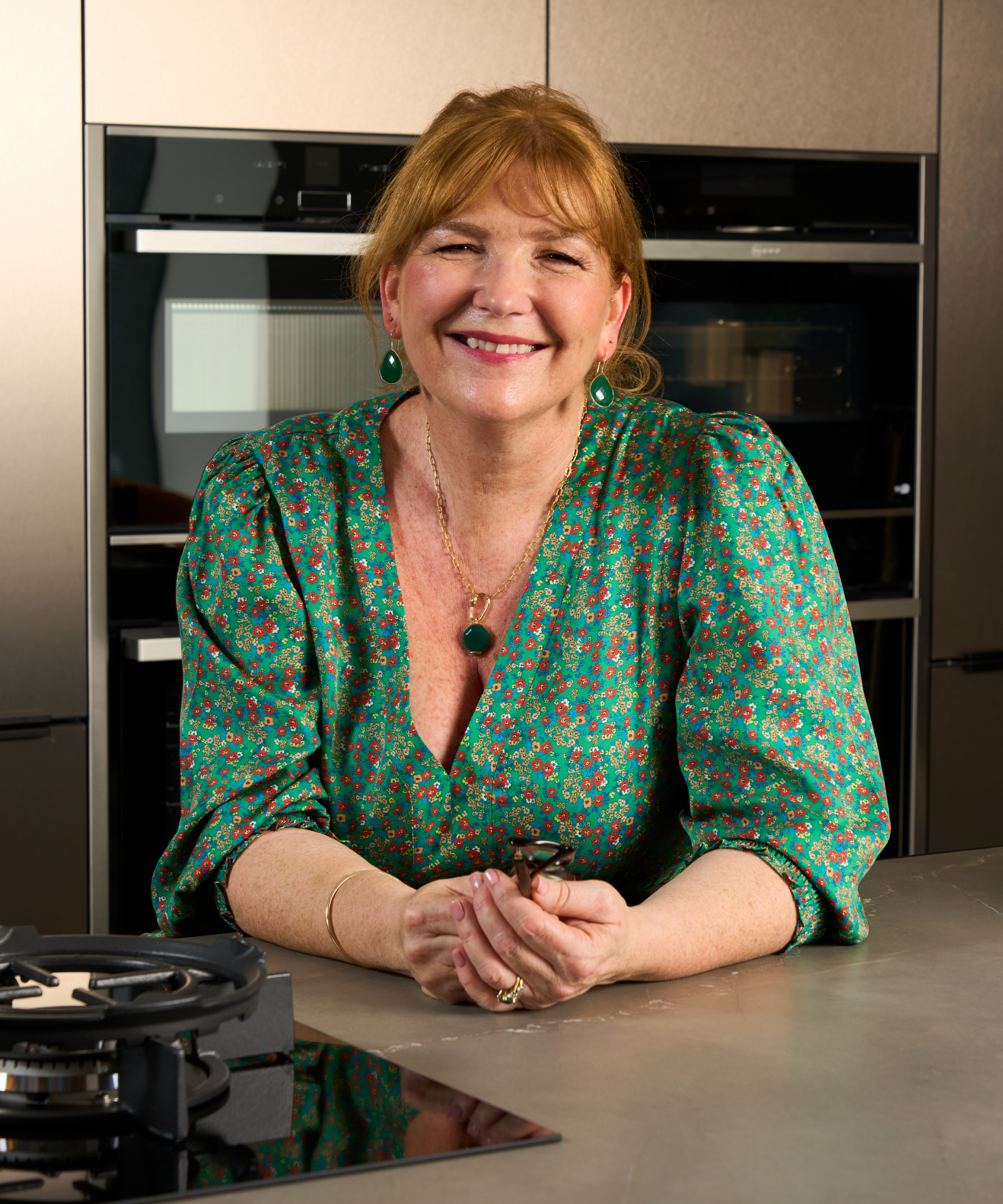
Helen is the founder of UKE Home Solutions Ltd (formerly Used Kitchen Exchange) and Rehome.co.uk; Supporting the KBB industry, Developers, Interior Designers and homeowners with closed-loop thinking and sustainable solutions for pre-owned interiors, excess and discontinued stock as well as ethical dismantle and removal.
Hugh is editor of sister title Livingetc.com and former digital editor of homebuilding.co.uk. He has worked on a range of home, design and property magazines, including Grand Designs, Essential Kitchens, Bathrooms, Bedrooms and Good Homes. Hugh has developed a passion for modern architecture and green homes, and moonlights as an interior designer, having designed and managed projects ranging from single rooms to whole house renovations and large extensions. He's currently renovating his own Victorian terrace in Essex, DIYing as much of the work as possible. He's recently finished his kitchen renovation, which involved knocking through walls, and landscaping a courtyard garden, and is currently working on a bathroom renovation.
- Sarah HarleyAssistant Editor
